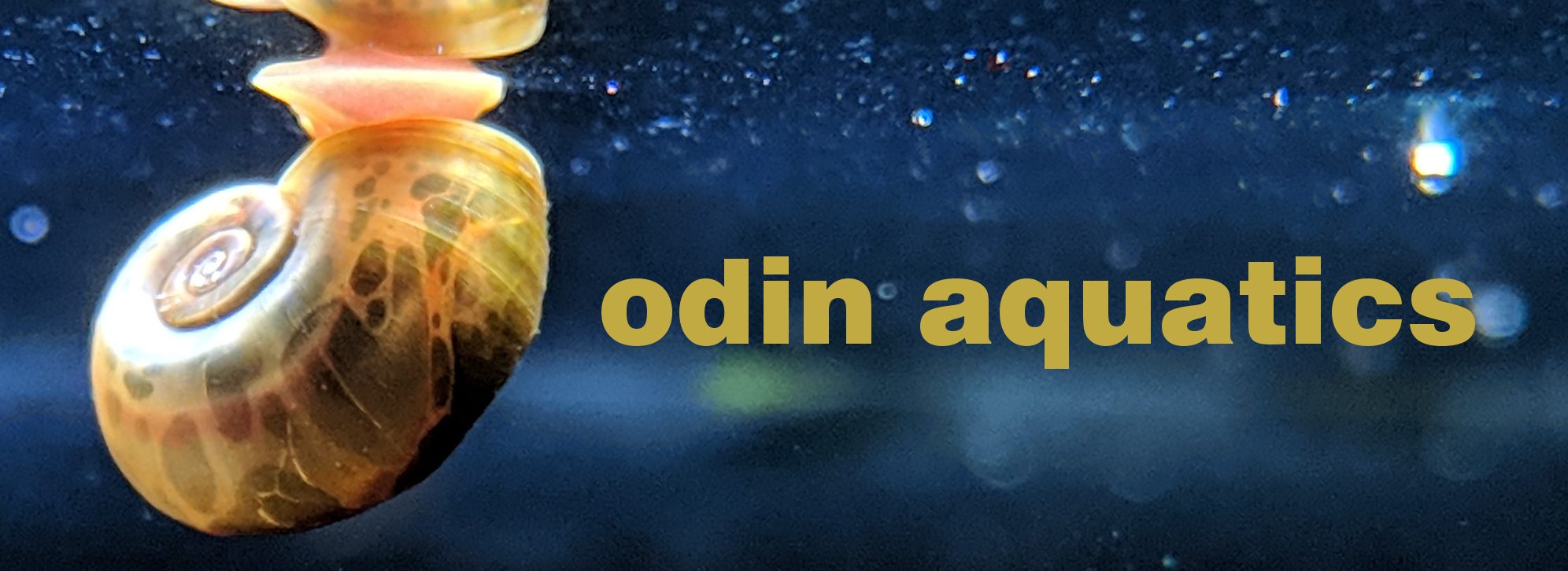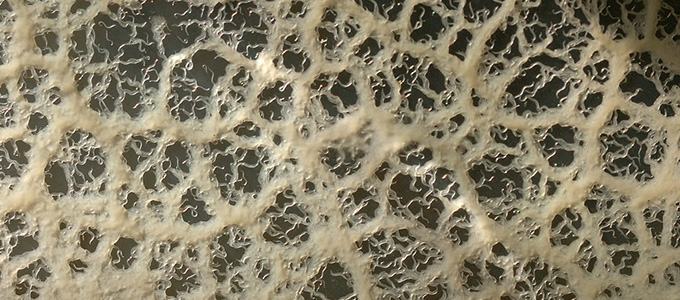Microworms - which are actually nematodes, not worms - are a convenient live food because cultures can be maintained almost indefinitely with very little maintenance. Unlike live brine shrimp, microworms don't have to be hatched and then immediately fed to your fish. An individual culture will last 4-6 weeks, with live worms being harvested and fed every day.
Microworms are a good food for fry that are too small to consume baby brine shrimp or dry foods. In my fish room I feed them to Melanotaenia Praecox (dwarf neon rainbowfish) fry because their mouths are not big enough to eat baby brine shrimp for their first 1-2 weeks.
I shot the video below using a small microscope to show microworms moving in water. The larger hash marks are 1 mm apart, the largest microworms are about 1 mm in length, however they are only about 0.1 mm wide. This allows very small fish to slurp them up like noodles. You can also see much smaller worms that are only 0.2 - 0.3 mm long. The round objects are pieces of potato flake from the culture.
How to Start a Microworm Culture
The first step to starting your own mircoworm farm is to obtain a starter culture. These can be found for sale on eBay, Amazon.com, or through local fish shops and aquarium clubs. A starter culture will be relatively inexpensive (usually around $10 for a good culture) and the best part is you will only have to pay this one time. Some people out there are selling cultures for as low as $3-$4*, but I strongly recommend paying slightly more for a culture that comes with worms, yeast, a container, and some instructions to get you started.
*I tried buying a culture for less than $4, and when it arrived it was a tiny bag in a standard letter envelope containing about a teaspoon of worms that smelled like death. It was a waste of money & time.
Once you have a starter culture and you begin setting up your own cultures, you should be able to keep live microworms available for your fish for as long as you want. The video below by Aquarium Co-op has a lot of good information on how and why you should set up a microworm culture.
Selecting a Container for your Microworm Culture
You can use just about any plastic container for a microworm culture, as long as it has a lid and a flat bottom to spread the culture media on. I like to use plastic containers from salad mix or packaged lunch meat that have been washed out.
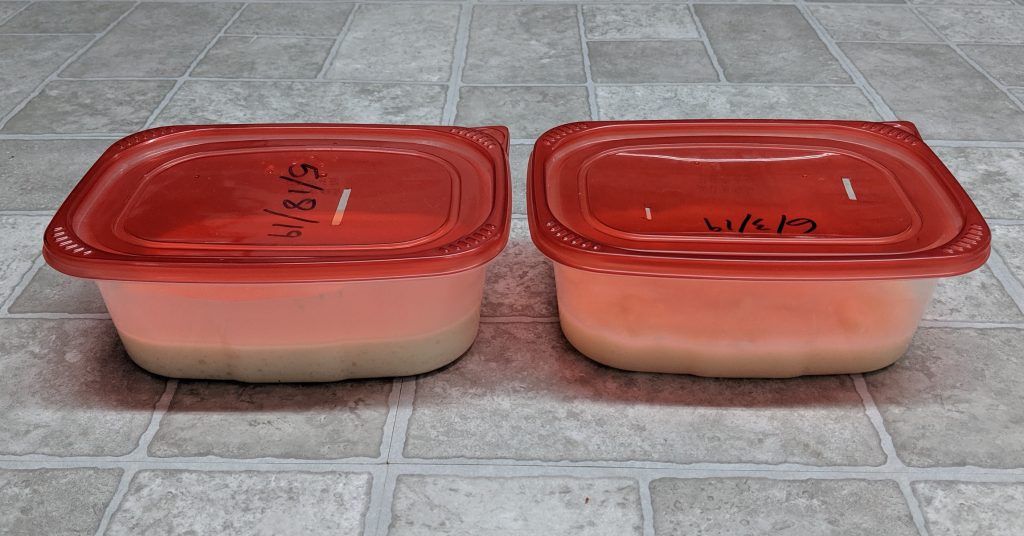
Nematodes need oxygen to live. I use a utility knife to cut small air holes in the lid of the container. These holes don't need to be very big, just enough to allow some air to reach the culture.

Selecting a Medium for your Microworm Culture
I use an instant potato mix as the base for my microworm cultures, as recommended by Aquarium Co-op. Other options include oatmeal, cornmeal, and baby cereal. Any of these soft grain mixes will work, but I've found the potato mix to be very cheap and easy to use. Just make sure whatever you buy has no additives.
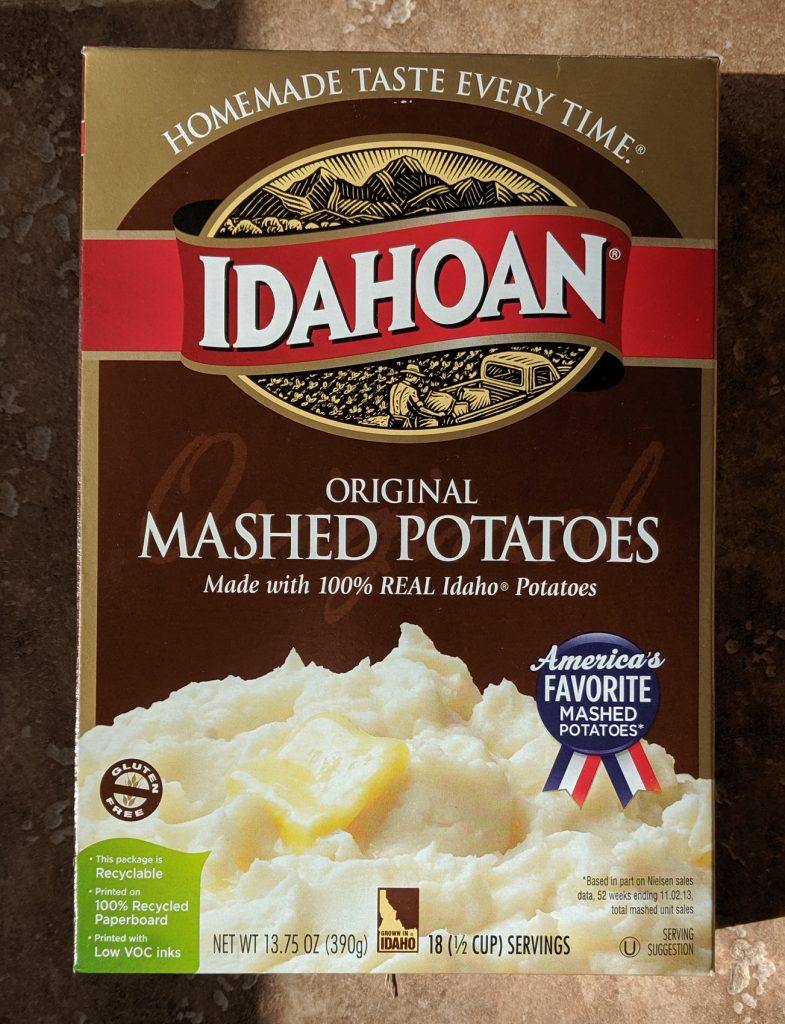
Starting a Microworm Culture
Once you have starter worms, a container, potatoes, and some bakers yeast, you can mix up a new culture.
- Pour enough mashed potato mix into the container to cover the bottom with about a half inch layer. This will expand when water is added.
- Add water from an aquarium and stir until the mixture is similar to mashed potatoes. You don't want it too runny or too dry, it should look like the photo on the box.
- Smooth out the mixture in the container
- Add a little bit of baker's yeast, and gently stir it into the top layer of the mix
- Smooth out the mixture and add two spoonfuls of aquarium water to wet the top
- Add the worms from your starter culture to the top of the mix, put the lid on the container (make sure you date it!) and wait a few days (3-5 days on average)
- Once you can see the top of the mixture shimmering or wiggling, you know the worms are multiplying. They can now be harvested using your finger or a spoon, paintbrush, etc. Just dunk them into the aquarium!
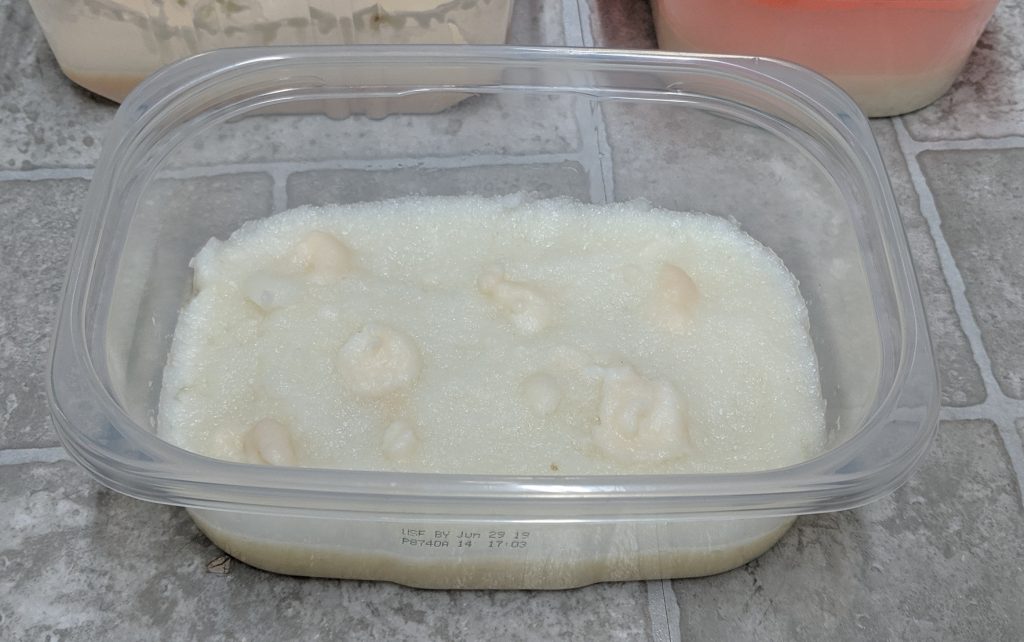
Keeping Your Microworms Going
To make sure you never run out of microworms, its a good idea to always have 2 active cultures. I start a new culture every 3-4 weeks. Make sure you write the date you started the culture on the container!
Your existing cultures should be stirred gently about once a week to keep them thriving. They will have a vinegar-like smell to them, which is normal. If you can see live worms and don't see any mold, it is probably still good. Eventually the culture will start to stink badly or grow mold, and it should be discarded. This will happen after several weeks.

